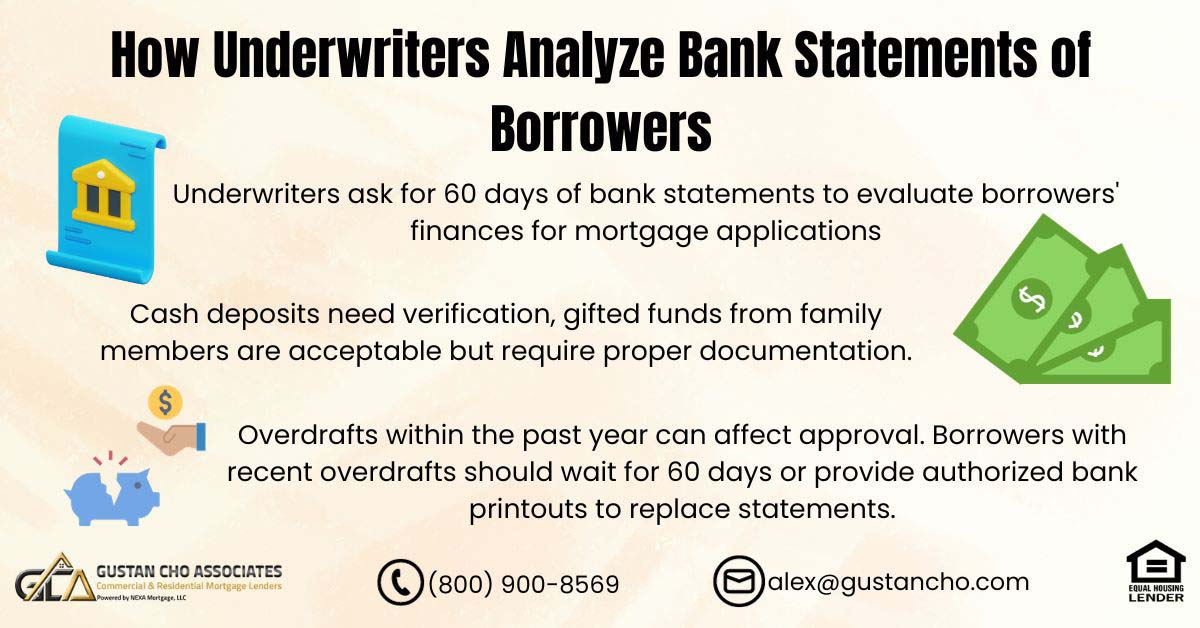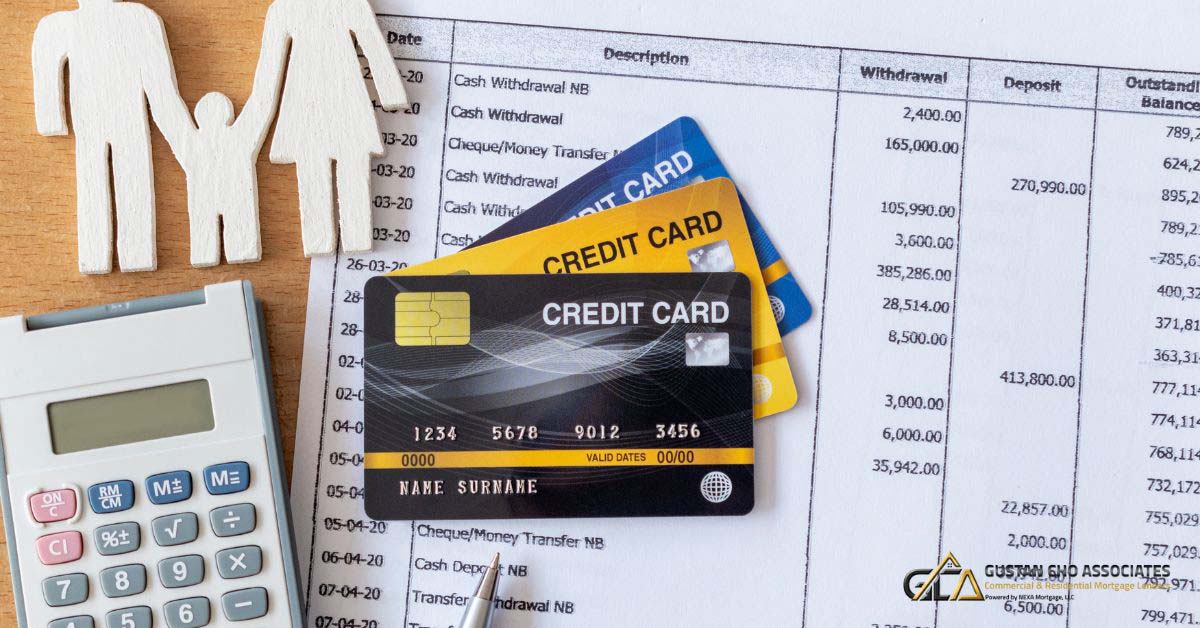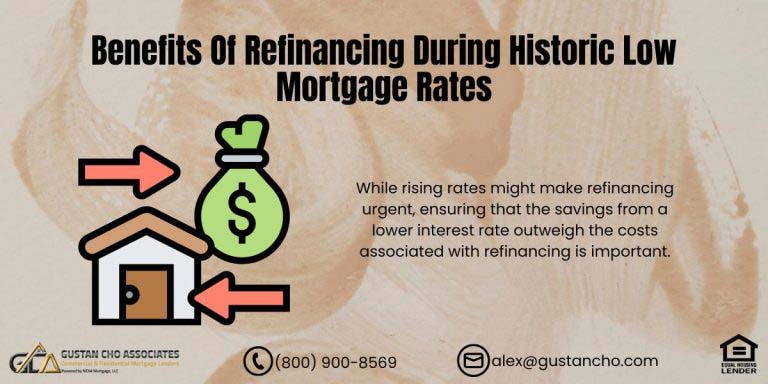This article delves into how underwriters analyze bank statements of borrowers. When individuals seek a mortgage loan, underwriters deem 60 days’ worth of bank statements as a crucial requirement for the application. The underwriting process mandates the submission of two months’ worth of bank statements.
How underwriters analyze bank statements is a crucial aspect of the mortgage underwriting process. Underwriters carefully scrutinize the funds in borrowers’ accounts, paying close attention to regular, irregular, substantial, and any overdrafts. It’s common for individuals to possess multiple bank statements.
Borrowers must only provide some bank statements, especially if they possess multiple accounts. When underwriters request 60 days of bank statements, it does not imply a need for statements from every bank account. Rather, they focus on the statements linked to the funds designated for the down payment and closing costs. In the following sections, we will explore the methodology employed by underwriters in analyzing these bank statements for individuals applying for mortgages.
How Mortgage Underwriters Analyze Bank Statements
For example, if $3,500 for the down payment is required and the borrower has three bank accounts as follows:
- $2,000 in bank account A
- $1,500 in bank account B
- $300.00 in bank account C
Underwriters examine the borrower’s accounts, specifically requesting details from accounts A and B while excluding submission of bank account C; that’s how underwriters analyze bank statements. In cases where a borrower possesses multiple accounts (up to 12) containing funds across all of them, they can present a single account showcasing ample funds required for the down payment and closing costs. If borrowers choose to disclose all their bank accounts, the underwriter meticulously scrutinizes and analyzes every provided bank account statement.
How Underwriters Analyze Bank Statements on Regular Deposits
One of the things that a mortgage loan underwriter will analyze is regular deposits. For example, with regular payroll checks automated and deposited electronically to a bank account every other week, that will be looked at as normal, and no further explanation is necessary.
When assessing bank statements, underwriters analyze electronic deposits, specifically noting the electronic transfer of the payroll check facilitated by the employer’s payroll service, which is deemed acceptable.
How underwriters analyze bank statements: they examine regular deposits into the account, whether made electronically or through physical methods. In such cases, the underwriter will seek information about the origin of these deposits. Individuals who receive cash payments from their part-time employment and deposit these funds may find these cash deposits not considered eligible for use in their financial assessments.
Get pre-qualified for mortage loan today, Click Here
How Underwriters Analyze Bank Statements With Cash Deposits
In the mortgage landscape, cash is not deemed an acceptable fund source. However, those with a stable part-time job yielding regular deposits can substantiate their funding using these documented inflows. Even with standard bank accounts, it remains imperative to authenticate the origin of these deposits. Likewise, individuals receiving consistent deposits of child support or alimony must provide comprehensive documentation outlining the transactions and their terms for scrutiny by the underwriter.
How Underwriters Analyze Bank Statements With Irregular Deposits
How underwriters analyze bank statements involving irregular deposits may present challenges. Although occasional irregular deposits are acceptable, any deposit exceeding $200 will be subject to careful examination by underwriters. The underwriter requires evidence of their source for such deposits to be included as assets. If irregular deposits originate from cash gifts from family members and cannot be traced, they are ineligible to be factored into the asset calculation.
It’s okay to make irregular deposits that have not been sourced, but you cannot use them as part of the funds available to use towards a down payment if the irregular, non-sourced deposit has been made within 60 days.
Examining bank statements involves verifying the origin of deposits made within the last sixty days. The term “sourced” refers to elucidating the funds’ origin, with cash deposits excluded from consideration. Deposits exceeding the 60-day timeframe, irrespective of their amount or irregularity, do not raise concerns. Generally, mortgage lenders request a 60-day history of bank statements; that’s how mortgage underwriters analyze bank statements.
Sourcing Irregular and Large Deposits In Bank Statements
Irregular and substantial bank deposits are permissible, given they can be properly traced to their source. For instance, if a substantial $10,000 deposit was made within the last sixty days, stemming from the sale of a secondary property, that $10,000 deposit remains valid.
This condition stands as long as the borrower furnishes the HUD settlement statement related to the second home sale and the corresponding deposit slip or confirmation of the transfer to the bank account. Funds originating from significant purchases like a car, motorcycle, RV, or boat are also acceptable, provided the borrower submits a bill of sale, a copy of the check, and the corresponding deposit documentation.
Talk To Our expert For mortage loan today, Click
How Underwriters Analyze Bank Statements and Withdrawals
Withdrawals presented in bank statements do not raise concerns for mortgage lenders. No justifications are necessary for withdrawals, regardless of their magnitude. Nevertheless, these withdrawals can affect the total assets and cash available for closing.
Underwriters may request evidence of regular automatic withdrawals to validate rental payments and fulfill other monthly obligations, showcasing timely bill payments. To verify the clearance of the earnest money check, lenders commonly require canceled checks or bank statements in how underwriters analyze bank statements.
Mortgage Guidelines on Gift Funds
Gifted funds can cover a home purchase’s down payment and closing costs. However, to use these funds, the giver providing the gift must be the buyer’s family member or relative. A formal gift letter is required from the donor, confirming that the funds are indeed a gift, not a loan. This letter also explicitly states that the recipient, the home buyer, is not obliged to repay these gifted funds.
Required Paperwork From The Donor of the Gift Funds
The donor must furnish a 30-day bank statement demonstrating that the gifted funds have been held for at least 30 days. Documentation indicating the transfer of the gift funds from the donor’s account to the recipient’s account is required. The transaction of the funds from the donor’s account should be visible on the donor’s bank statement. Additionally, deposits into the recipient’s bank account can be validated by providing a copy of the check and a deposit slip used by the recipient.
We have no lender overlays on government and conventional loans: APPLY NOW!!!
Overdrafts In Bank Statements Can Be a Deal Deal-Breaker.
Overdrafts can significantly impact a mortgage loan application. Lenders strictly avoid any instances of overdrawing from applicants within the past year. Whether it’s a minor $10 overdraft or a larger $1,000 one, any overdraft holds equal weight in the eyes of the loan evaluator. Those with multiple bank accounts, some of which have experienced overdrafts, typically refrain from submitting bank statements displaying these occurrences.
Fortunately, solutions exist to address issues related to overdrafts on bank statements.
Solution To Bank Statements on How Underwriters Analyze Bank Statements With Overdrafts
How underwriters analyze bank statements when borrowers provide them for the latest 60 days? During this period, what happens if borrowers do not encounter any overdrafts, even if they may have had overdrafts in the time leading up to these 60 days? Borrowers must submit their genuine bank statements covering the past 60 days, and if there are no overdrafts within this specific timeframe, it satisfies the lender’s criteria.
If they had overdrafts before the 60 days, there is a column in bank statements that lists year-to-date overdraft fees (YTD Fees). This will alert the underwriter that they had bank overdrafts in the past 12 months. If this is the case, borrowers should not submit actual bank statements.
They should head to the bank and obtain 60-day bank statement printouts. These printouts need to feature a column showing year-to-date overdraft fees. Using these printouts in place of the original bank statements is acceptable. Individuals who have had bank overdrafts within the last 12 months should visit the bank, secure 60 days’ worth of printouts, and have them authorized, dated, and stamped by the bank teller.
Suppose borrowers have experienced recent overdrafts and lack other bank accounts without overdrafts. In that case, the only viable option is to wait for sixty days to allow the overdrafts to season during this period.
Qualifying For a Mortgage With Lender With No Lender Overlays
Borrowers who need to qualify for a mortgage with a lender licensed in multiple states with no mortgage overlays can contact us at Gustan Cho Associates Mortgage Group at 800-900-8569 or text us for a faster response. Or email us at gcho@gustancho.com. The team at Gustan Cho Associates is available seven days a week, evenings, weekends, and holidays. Gustan Cho Associates has zero overlays on FHA, VA, USDA, and Conventional loans.
What Do Mortgage Underwriters Look In Bank Statements
When seeking a mortgage loan, lenders typically ask for bank statements. What exactly do mortgage underwriters scrutinize in these statements? They ask for a 60-day history of your accounts. One crucial reason behind this request is to verify if borrowers possess ample funds for both the down payment and closing expenses when buying a home.
Among the key elements underwriters examine are unusual deposits and overdrafts—specifically, any irregular deposits exceeding $200 must be traced back to their source. To comply, borrowers must provide details regarding the origin of such irregular deposits.
Apply For Today For Buying A Home
Cash Deposits Need To Be Sourced
Borrowers are allowed to utilize cash deposits, provided that these deposits can be traced to a legitimate source. Unverified cash deposits, however, cannot be utilized for this purpose. These unverified deposits do not contribute towards the funds available for covering closing costs and down payments. For instance, if a homebuyer requires a $5,000 down payment and their bank statement shows a $5,000 balance resulting from a recent cash deposit, this $5,000 balance cannot be considered as confirmed funds for the down payment.
Gift funds from a relative or family member are allowed for FHA loans. A home buyer can get 100% gifted funds from a family member or relative for the down payment and closing costs for their home purchase.
If a borrower has deposited $5,000 resulting from a vehicle sale and can furnish a copy of the check along with the bill of sale and title for the sold vehicle, the $5,000 deposit is deemed as sourced funds. This amount can be utilized for verification purposes and is recognized as sourced funds for the down payment. Cash holds no place in the mortgage industry. To utilize irregular deposits as sourced funds, borrowers must establish a clear paper trail.
Gift Funds Needs To Be Sourced
Homebuyers are eligible to receive gift funds for their home purchase, but these funds must be properly documented. Mortgage Underwriters will ask for a canceled check from the donor as proof. Donors are required to provide 30 days’ worth of bank statements to illustrate the movement of funds from their account to the recipient’s account.
To validate the gift funds, it’s crucial to demonstrate how the funds were withdrawn from the donor’s account and deposited into the recipient’s account. Additionally, a signed and dated gift letter from the donor affirming that the funds are a gift, not a loan, and do not require repayment is necessary.
What If I Have Cash I Want To Use Towards My Down Payment on a Home Purchase?
Some individuals keep cash in a bank’s safe deposit box or at home due to their lack of trust in banks. However, cash poses an issue in the mortgage realm as it cannot be utilized for down payments or closing expenses. Those with cash, often termed “mattress money,” must deposit it into a bank account and allow it to mature for a minimum of two months.
Mortgage lenders typically request two months’ worth of bank statements. Consequently, any cash deposits made before this period won’t undergo scrutiny, remaining inaccessible to the lender. To prospective homebuyers preparing for purchase and possessing untraceable funds, I advise promptly depositing these funds into a bank account and allowing a two-month seasoning period.
What Do Mortgage Underwriters Look In Bank Statements: Overdrafts In Bank Statements
What are mortgage underwriters scrutinizing in bank statements? How underwriters analyze bank statements? Overdrafts noted in bank statements can significantly impact mortgage loan approval. Even a single overdraft, even for as little as $5, is viewed unfavorably by these underwriters. They perceive individuals who overdraft their accounts as lacking financial responsibility. Lenders specifically aim to see no overdraft instances within the previous 12 months.
While underwriters typically request only two months of bank statements, the provided statements may contain a section detailing year-to-date overdraft fees. This section serves as an alert to the underwriter about the borrower’s recent history of overdrafts within the past year, which could potentially lead to denial of the loan application.
Apply Now For Bank Statement Loan , Click Here
Solutions of Overdrafts In Past 12 Months
What are mortgage underwriters searching for in bank statements regarding overdrafts? Borrowers who have had overdrafts within the last year are not required to provide their bank statements. Instead, they can obtain two months of printed bank statements from the bank itself. Underwriters will approve bank statement printouts that are signed, stamped, and dated by a bank teller as substitutes for the actual statements.
With bank statement printouts, the year-to-date overdraft column does not exist. As long as borrowers do not have any overdrafts in the past 60 days’ bank statements, they will be safe.
It’s highly advisable to have overdraft protection in place. However, it’s worth noting that many banks typically extend overdraft protection to their deposit account holders only if their credit scores are above 680. It’s recommended to inquire with your bank about the possibility of obtaining overdraft protection.
What Do Mortgage Underwriters Look In Bank Statements: Qualifying For Mortgage With a Lender With No Overlays
Borrowers with less-than-perfect credit needing to qualify for a mortgage with a mortgage company with no lender overlays can contact us at Gustan Cho Associates at 800-900-8569 or text us for a faster response. Or email us at alex@gustancho.com. Gustan Cho Associates is a national mortgage company with no lender overlays on FHA, VA, USDA, and Conventional loans. We are available seven days a week, evenings, weekends, and holidays.
APPLY NOW and get PRE-APPROVED!!!
Frequently Asked Questions (FAQ) About How Underwriters Analyze Bank Statements of Borrowers
Why do underwriters require 60 days’ worth of bank statements for a mortgage application? Underwriters request 60 days’ worth of bank statements to thoroughly analyze a borrower’s financial history, focusing on the funds designated for the down payment and closing costs. This helps them assess the borrower’s financial stability and ensure they have sufficient funds for the home purchase.
Do I need to provide statements from all my bank accounts when underwriters request 60 days of bank statements? No, borrowers are not required to provide statements from all their bank accounts. Underwriters specifically focus on the statements linked to the funds designated for the down payment and closing costs. If multiple accounts are involved, borrowers can present a single account showcasing ample funds for these purposes.
How do underwriters analyze regular deposits in bank statements? Underwriters consider regular deposits, especially those made electronically, as normal. For example, electronically deposited payroll checks are typically accepted without further explanation. However, underwriters may seek information about the origin of these deposits, especially if they are irregular or substantial.
What happens if there are irregular deposits in the bank statements? Irregular deposits exceeding $200 are subject to careful examination by underwriters. Borrowers must provide evidence of the source for such deposits to be included as assets. Deposits from untraceable sources, such as cash gifts without proper documentation, may not be considered eligible for use in financial assessments.
Are cash deposits acceptable for down payments or closing costs in a mortgage application? Cash deposits are generally not deemed acceptable fund sources in the mortgage industry. However, if cash deposits can be properly traced to a legitimate source, such as a documented property sale or a significant purchase, they may be considered valid.
How do overdrafts in bank statements affect mortgage applications? Overdrafts can significantly impact mortgage loan applications, and lenders typically avoid instances of overdrawing within the past year. Even minor overdrafts can be viewed negatively. Borrowers with overdrafts in the past 12 months may need to provide bank statement printouts from the bank, signed, stamped, and dated by a bank teller, instead of the actual statements.
Can gifted funds be used for a mortgage down payment and closing costs? Yes, gifts can be used for a mortgage down payment and closing costs. However, the giver must be a family member or relative, and a formal gift letter is required, confirming that the funds are a gift and not a loan. Documentation, including the donor’s bank statements and evidence of the fund transfer, is also necessary.
Can cash be used for a down payment on a home purchase? Cash, often called “mattress money,” cannot be directly used for a down payment or closing costs. Individuals with cash must deposit it into a bank account and allow it to mature for at least two months before it can be considered for use in a mortgage application.
How can borrowers qualify for a mortgage with a lender with no overlays? Borrowers with less-than-perfect credit looking to qualify for a mortgage with a lender with no overlays can contact Gustan Cho Associates Mortgage Group. This lender has zero overlays on FHA, VA, USDA, and Conventional loans, allowing borrowers to secure a mortgage without additional lender restrictions.
What should borrowers do if they have experienced overdrafts in the past 12 months? This is how underwriters analyze bank statements. Borrowers with overdrafts in the past 12 months should not submit actual bank statements. Instead, they should obtain 60-day bank statement printouts from the bank, featuring a column showing year-to-date overdraft fees. When signed, stamped, and dated by a bank teller, these printouts can serve as substitutes for the original statements, satisfying the lender’s criteria if no overdrafts are present within the specific timeframe.
This blog about How Underwriters Analyze Bank Statements of Borrowers was updated on January 30th, 2024.










